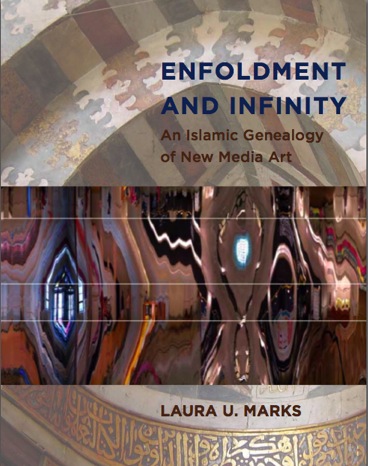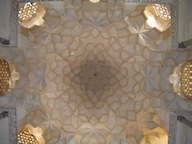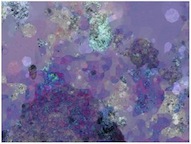2010, MIT Press.

“Startlingly bold. ... [Marks’] vision of efflorescence across borders of faith and politics is exhilarating and persuasive.” --Marina Warner, Art Newspaper
“After reading Laura Marks’s lucid Enfoldment and Infinity, which leads us through the deep time layers of Arabic-Islamic arts and sciences, we have to give up our established concepts of media history. … Chapter by chapter, it becomes evident that some of the most important modern paradigms like pixels, algorithms, morphs, or even virtual reality and artificial life have not been originally generated by the Occident, but through L’Age d’Or of the Orient.” — Siegfried Zielinski
Enfoldment and Infinity establishes points of contact between classical Islamic art and contemporary computer-based art. For example, both are often aniconic, both are performative, both unfold from an invisible source. Demonstrating and inventing Islamic “roots” for new media art, the book argues that specific moments of classical Islamic thought give us new and fruitful ways to think about contemporary art. The book also traces what I call “the haptic transfer and the travels of the abstract line”: how Islamic aesthetics journeyed westward from medieval times on, drawing out powers of abstraction and embodiment, ultimately to inform modernism and contemporary new media art. It demonstrates meeting points between Islamic thought and the philosophy of Gilles Deleuze, and it proposes an enfolding-unfolding aesthetics to explain how artworks (and other things) unfold from the universe through a filter of information. The books is richly illustrated with 141 b/w illustrations and 31 color plates.
Contents:
Chapter One: Getting things unfolded
Chapter Two: Islamic aesthetics and new media art: points of contact
Chapter Three: The haptic transfer and the travels of the abstract line, part I
Chapter Four: The haptic transfer and the travels of the abstract line, part II
Chapter Five: The haptic transfer and the travels of the abstract line, part III
Chapter Six: Baghdad, 830: Birth of the algorithm
Chapter Seven: Baghdad, 1000: Origin of the pixel
Chapter Eight: Cairo, 972: Ancestor of the morph
Chapter Nine: Herat, 1487: Early virtual reality
Chapter Ten: Karabagh, 1700: Seeds of artificial life


Left: View of dome, tomb of Sheikh ‘Abd al-Samad (1304-1325), Natanz, Iran. Photograph by Laura Marks. Right: Still, Erwin Driessens and Maria Verstappen, Ima Traveller, interactive media work (1996)
Reviews:
Josh Ellenbogen, “Value: Erkki Huhtamo, Illusions in Motion: Media Archaeology of the Moving Panorama and Related Spectacles; Laura U. Marks, Enfoldment and Infinity: An Islamic Genealogy of New Media Art,” The Art Bulletin, 96:1 (2014): 132-134.
Carol Bier, review in Journal of Mathematics and the Arts 6:2-3 (June-September 2012):137-139.
An illuminating discussion on Christopher Vitale’s blog Networkologies (2011)
Stijnie Thuijs, review in Masters of Media (September 2011)
Marina Warner, review in Art Newspaper 230 (December 2011): 46.
Kathleen Scott, review in Screen 52:4 (Winter 2011): 553-556.
Jay Murphy, “Unfolding Complexity,” Afterimage 38:6 (February 2011): 38.
Elizabeth Harrington, Association for Modern and Contemporary Art of the Arab World, Iran, and Turkey (Spring 2011)
Nora Azouz, “L’Islam dans les arts expérimentaux,” L’Express du Pacifique (January 28, 2011): 11.
Rob Harle, review in Leonardo Reviews (December 2010)
